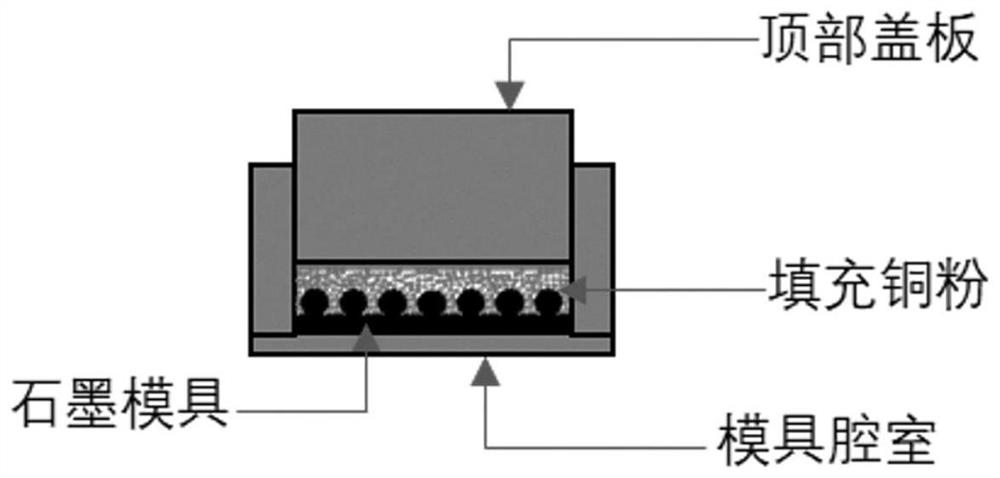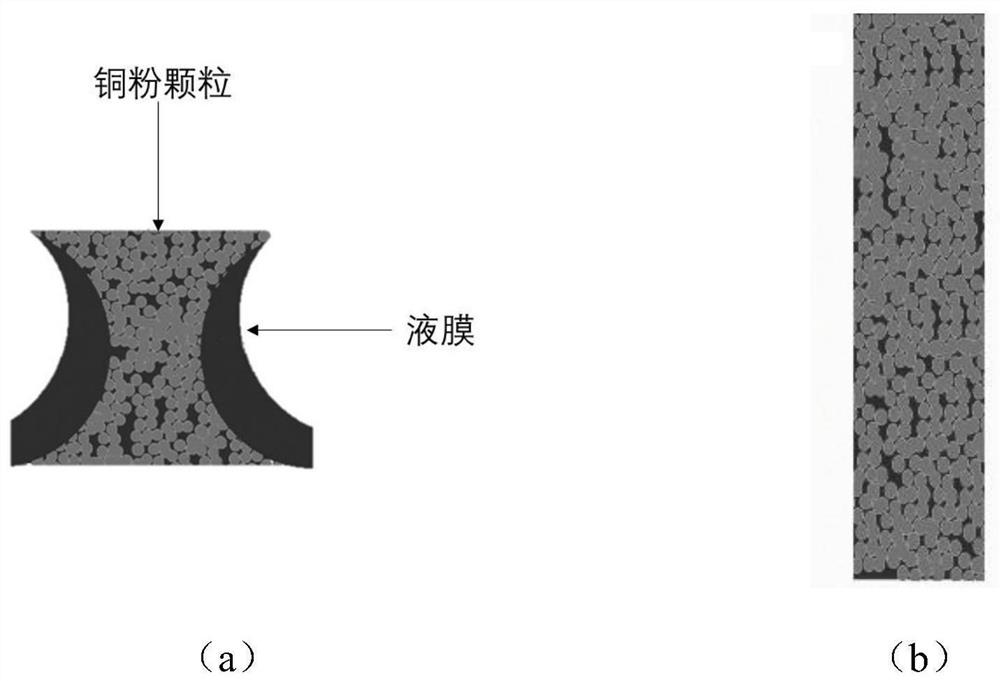Composite microcavity porous curved-surface microchannel structure for liquid film boiling and preparation method thereof
A technology of micro-channel structure and porous surface, applied in the field of heat transfer, can solve problems such as reducing heat transfer coefficient, and achieve the effects of enhancing heat transfer performance, simple manufacturing process and low cost
- Summary
- Abstract
- Description
- Claims
- Application Information
AI Technical Summary
Problems solved by technology
Method used
Image
Examples
Embodiment 1
[0044] A method for preparing a compound microcavity porous surface microchannel structure for liquid film boiling with enhanced heat transfer capability, comprising the following steps:
[0045] Step 1: Take an appropriate amount of sodium chloride particles, grind and sieve to obtain a pore-forming agent with a particle size of 15-20 μm, and dry it for later use;
[0046] Step 2: At room temperature, mix the spherical copper powder with a particle size of 50-75 μm and the pore-forming agent at a volume ratio of 4:6, and put them into a ball mill for ball milling to obtain a mixture of copper powder and pore-forming agent ;
[0047] Step 3: First put the graphite mold into the graphite shaping chamber, and then carefully fill the mixture of copper powder and sodium chloride. When the filling height of the mixture of copper powder and sodium chloride is 0.5mm higher than the mold, fill the copper powder The substrate is covered on the surface of the mixture of copper powder a...
Embodiment 2
[0053] A method for preparing a compound microcavity porous surface microchannel structure for liquid film boiling with enhanced heat transfer capability, comprising the following steps:
[0054] Step 1: Take an appropriate amount of sodium chloride particles, grind and sieve to obtain a pore-forming agent with a particle size of 15-20 μm, and dry it for later use;
[0055] Step 2: At room temperature, respectively mix the spherical copper powders of 50-75 μm, 75-100 μm and 100-150 μm according to the volume ratio of 1:1:1 and continue to mix with the pore-forming agent according to the volume ratio of 4:6, Put them together in a ball mill for ball milling and mixing to obtain a mixture of copper powder and pore-forming agent;
[0056] Step 3: First put the graphite mold into the graphite shaping chamber, and then carefully fill the mixture of copper powder and sodium chloride. When the filling height of the mixture of copper powder and sodium chloride is 0.5mm higher than the...
Embodiment 3
[0062] A method for preparing a compound microcavity porous surface microchannel structure for liquid film boiling with enhanced heat transfer capability, comprising the following steps:
[0063] Step 1: First put the graphite mold into the graphite shaping chamber, and then carefully fill the spherical copper powder of 50-75μm. When the filling height of the copper powder is 0.5mm higher than the mold, cover the copper substrate on the surface of the copper powder. Then seal it with a cover (such as figure 1 shown), and finally apply a certain pressure with the fixture to clamp up and down, so that the copper powder is compacted and in close contact with the copper substrate;
[0064] Step 3: Put the mold into a vacuum furnace for vacuum sintering, the sintering temperature is 900°C, the sintering time is 40 minutes, and then naturally cool to room temperature to obtain a sintered copper powder block;
[0065] Step 4: Ultrasonic cleaning the sintered copper powder block with...
PUM
| Property | Measurement | Unit |
|---|---|---|
| Particle size | aaaaa | aaaaa |
| Particle size | aaaaa | aaaaa |
Abstract
Description
Claims
Application Information
 Login to View More
Login to View More - R&D
- Intellectual Property
- Life Sciences
- Materials
- Tech Scout
- Unparalleled Data Quality
- Higher Quality Content
- 60% Fewer Hallucinations
Browse by: Latest US Patents, China's latest patents, Technical Efficacy Thesaurus, Application Domain, Technology Topic, Popular Technical Reports.
© 2025 PatSnap. All rights reserved.Legal|Privacy policy|Modern Slavery Act Transparency Statement|Sitemap|About US| Contact US: help@patsnap.com


